Country
Crash of an Airspeed AS.57 Ambassador 2 in London-Gatwick
Date & Time:
Jul 26, 1969
Registration:
G-ALZR
Survivors:
Yes
Schedule:
Paris - London
MSN:
5214
YOM:
1952
Crew on board:
3
Crew fatalities:
Pax on board:
5
Pax fatalities:
Other fatalities:
Total fatalities:
0
Circumstances:
On touchdown at Gatwick Airport, the nose gear collapsed. The airplane slid for dozen yards before coming to rest. All eight occupants were evacuated safely while the aircraft was damaged beyond repair.
Probable cause:
Nose gear collapsed on landing.
Crash of an Airspeed AS.57 Ambassador 2 in Manston
Date & Time:
Sep 30, 1968
Registration:
G-AMAG
Survivors:
Yes
Schedule:
London - London
MSN:
5229
YOM:
1953
Crew on board:
2
Crew fatalities:
Pax on board:
0
Pax fatalities:
Other fatalities:
Total fatalities:
0
Circumstances:
After a touch-and-go landing at Gatwick Airport, the right main gear didn't lock up. The gear was recycled and the pilot then checked the gear visually and the gear appeared to be fully retracted. On gear extension for the next landing, the right main gear warning light remained on. The gear was recycled several times, but without success. Other attempts (high g turns, using the hand pump, and touching the runway) also failed. It was then decided to make a wheels-up landing on a foam carpet at Manston.
Probable cause:
The starboard undercarriage pin had fractured and fallen out of its housing. This permitted the assembly to drop under its own weight and, as a result it was mechanically impossible for the up-lock catch to disengage from the pin on the undercarriage leg.
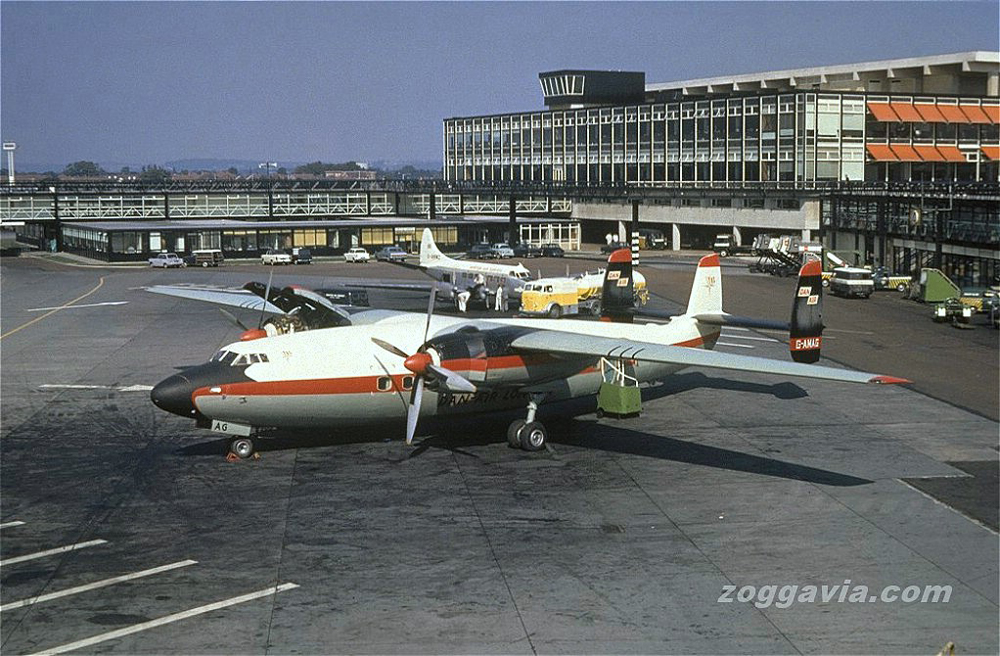
Crash of an Airspeed AS.57 Ambassador 2 in London: 6 killed
Date & Time:
Jul 3, 1968 at 1728 LT
Registration:
G-AMAD
Survivors:
Yes
Schedule:
Deauville - London
MSN:
5211
YOM:
1951
Flight number:
C6845
Crew on board:
3
Crew fatalities:
Pax on board:
5
Pax fatalities:
Other fatalities:
Total fatalities:
6
Captain / Total hours on type:
4450.00
Copilot / Total hours on type:
142
Aircraft flight hours:
22290
Circumstances:
The aircraft left Deauville at 1535 hrs., on flight No. C.6845, and made an uneventful flight to London at flight level 70. It was cleared to land on runway 28 Right and at 1624 hrs, reported passing the outer marker inbound. The approach proceeded normally and the aircraft came into the view of air traffic control personnel in the tower when it was about 200 feet, and close to the airport boundary. It was then in a normal approach attitude. However, at a position near the threshold of runway 28 Right the port wing was seen to drop and the aircraft turned slowly to the left off the runway centerline. The bank increased and the port wing tip, followed by the port main wheels, touched the grass surface of the aerodrome. Witnesses near to the runway threshold heard engine power applied as if for an overshoot and the aircraft then became airborne again and with the bank further increasing, it flew towards the partly constructed No.I terminal building on the northeast side of the airport central area. Whilst still steeply banked it struck two British European Airways Trident aircraft, which were parked at a pier of the terminal building, and burst into flames. The aircraft then rolled on to its back and after demolishing a twelve foot high metal blast barrier came to rest against the ground floor of the terminal building between two of the embarkation piers. 27 people on the ground in the area received slight injuries, 2 people were seriously injured. Six occupants were killed while two others were killed as well as all eight horses. The Trident registered G-ARPT was also destroyed while the Trident registered G-ARPI was repaired.
Probable cause:
Failure of the port flap operating rod due to fatigue, permitting the port flaps to retract. This resulted in a rolling moment to port which could not be controlled.
Final Report:
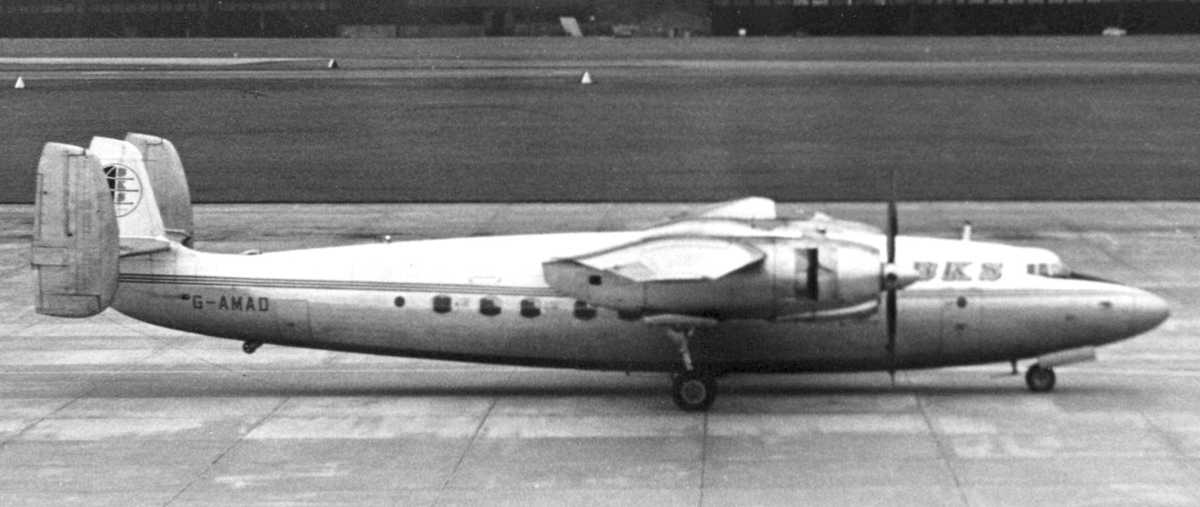
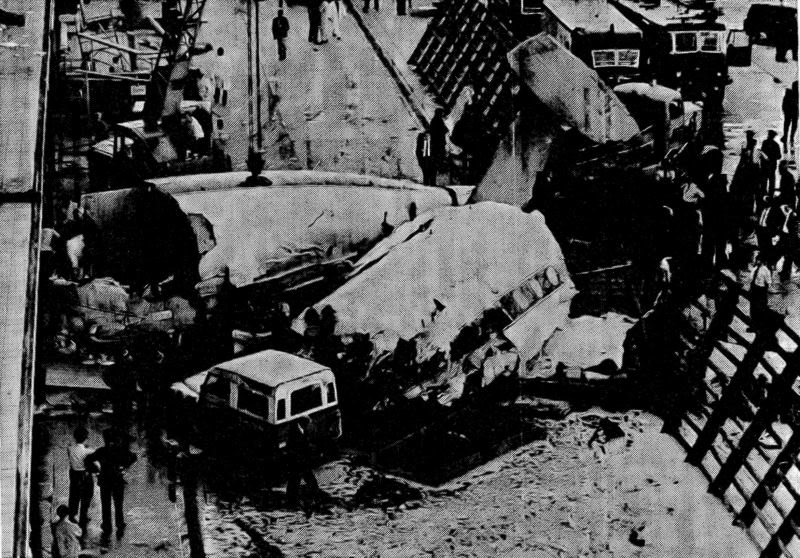
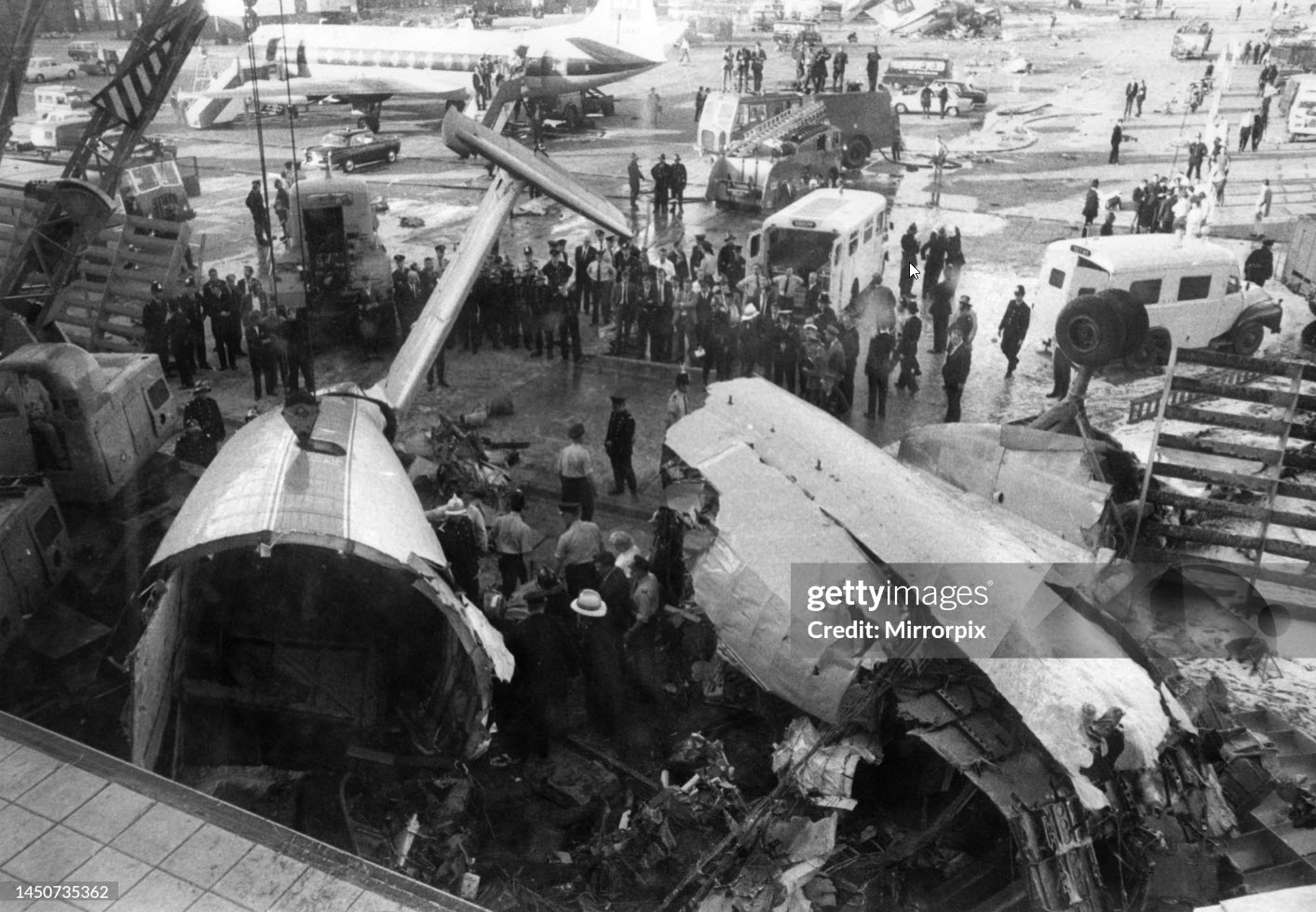
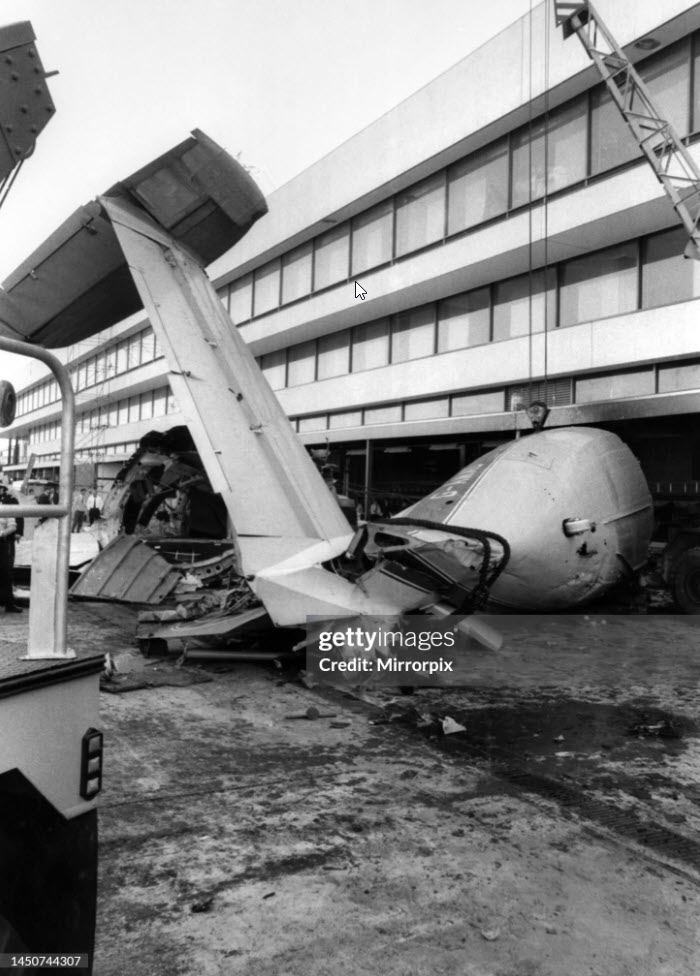
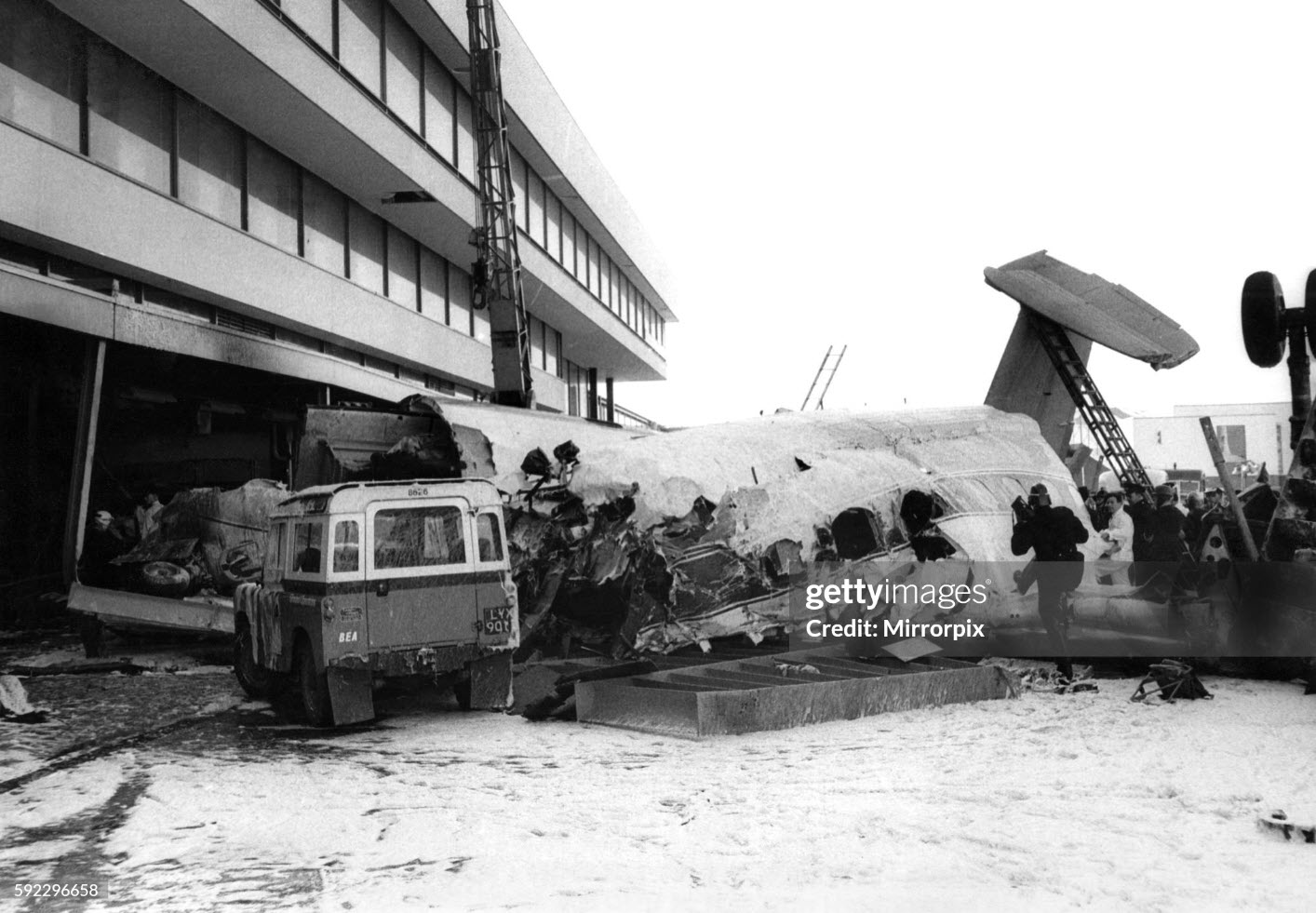
Crash of an Airspeed AS.57 Ambassador 2 in Luton
Date & Time:
Sep 14, 1967
Registration:
G-ALZS
Survivors:
Yes
Schedule:
Luxembourg - Luton
MSN:
5215
YOM:
1951
Crew on board:
5
Crew fatalities:
Pax on board:
64
Pax fatalities:
Other fatalities:
Total fatalities:
0
Circumstances:
Following an uneventful charter flight from Luxembourg, the crew completed a landing by night on a wet runway. After touchdown, the airplane encountered difficulties to decelerate and overran. It lost its undercarriage and came to rest few dozen yards further. All 69 occupants were evacuated safely while the aircraft was considered as damaged beyond repair. At the time of the accident, the horizontal visibility was estimated to 1,800 meters with clouds at 300 feet. It is believed the aircraft suffered aquaplaning after landing while the flaps were retracted in the takeoff position and the brakes were applied intermittently.
Crash of an Airspeed AS.57 Ambassador 2 in Beauvais
Date & Time:
Apr 14, 1966
Registration:
G-ALZX
Survivors:
Yes
Schedule:
London - Beauvais
MSN:
5220
YOM:
1951
Crew on board:
4
Crew fatalities:
Pax on board:
55
Pax fatalities:
Other fatalities:
Total fatalities:
0
Circumstances:
On final approach to Beauvais-Tillé Airport, the aircraft was too high on the glide after it broke out from the clouds. Rather than making a go around procedure, the crew continued the approach but landed too far down the runway 13. Unable to stop within the remaining distance of 3,500 feet, the airplane overran, lost its left main gear and nose gear and came to rest against a mount of earth. At the time of the accident, the runway surface was wet, which was considered as a contributing factor.
Probable cause:
Wrong approach configuration on part of the flying crew.
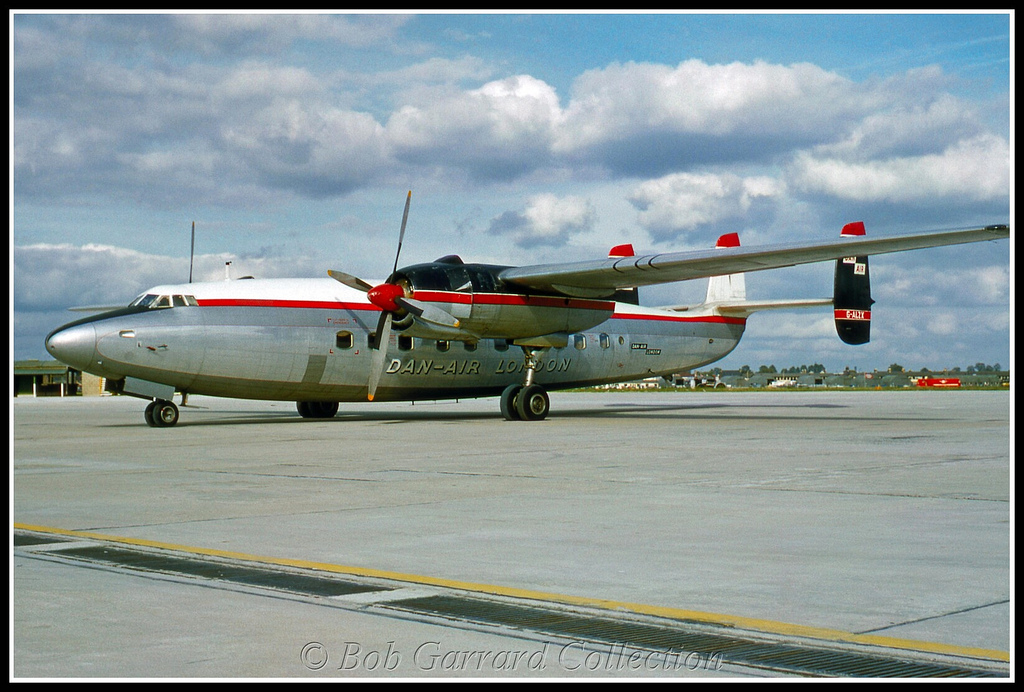
Crash of an Airspeed AS.57 Ambassador 2 in Munich: 23 killed
Date & Time:
Feb 6, 1958 at 1603 LT
Registration:
G-ALZU
Survivors:
Yes
Schedule:
Belgrade – Munich – Manchester
MSN:
5217
YOM:
1951
Flight number:
CY609
Crew on board:
6
Crew fatalities:
Pax on board:
38
Pax fatalities:
Other fatalities:
Total fatalities:
23
Captain / Total hours on type:
1722.00
Copilot / Total hours on type:
3143
Circumstances:
The aircraft had carried out a special flight on 3 February 1958, from England to Belgrade, making an intermediate landing at Munich-Riem Airport for refuelling purposes. On 6 February it flew back from Belgrade, bound for Manchester. As planned, it again made an intermediate landing at Munich to refuel, landing there at 1417LT. The aircraft made three attempts at take-off, two were abandoned, and the accident occurred during the third attempt. The copilot abandoned the first take-off because the boost pressure readings of both engines showed upward variations, rising 2 or 3 inches above the usual reading of 57.5 inches. The second attempt to take-off followed immediately after the aircraft had taxied back to the beginning of the runway. The engine run-up was not repeated. The captain abandoned the second take-off because the boost pressure reading (this time on the port engine only) again rose beyond the normal maximum value to 60 inches. In each case the take-off was abandoned approximately half way down the runway. After the second attempt the aircraft continued rolling as far as the end of the runway and from there proceeded to the terminal building. The passengers disembarked, and the BEA station engineer went aboard. He then pointed out to the two pilots that the variations in boost pressure were connected with the elevation of Munich Airport. After a short discussion, the pilots decided to make a third (attempt at) take-off, and the passengers were told to board the aircraft again. Before the fresh (attempt to) take- off, a further engine run-up was carried out. After take-off had begun, the boost pressure reading of the port engine again fluctuated somewhat, but this ceased after the captain had throttled back slightly for a short time. After he had opened up the throttle fully again, no further fluctuation were observed. The aircraft never became airborne in the course of the third attempt at take-off. It traveled on over the whole length of the runway and the adjoining grass-covered stopway (250 m). At the end of the stopway it crashed through a wooden fence which marked the aerodrome boundary, cleared a secondary road and struck a house standing on the other side of the road. The left wing was torn off outboard of the engine mounting. Parts of the tail unit were also torn off here. The house caught fire. The aircraft then crashed into a wooden hut standing on a concrete base about 100 m further on, striking it with the right side of the rear section of the fuselage. The fuselage was torn away on a level with the trailing edge of the wing. The hut and the part of the fuselage which was torn away caught fire. The remainder of the aircraft wreckage slid on for a further 70 m. Of the 44 occupants (6 crew and 38 passengers) on board, 21 were killed instantly. The others received injuries of a more or less serious nature. Two died later in hospital as a result of their injuries. The house which was struck by the aircraft was badly damaged by fire. The hut was destroyed by fire. Among those killed were eight players and the trainer. The president of the club and ten other players survived the accident.
Probable cause:
During the stop of almost two hours at Munich, a rough layer of ice formed on the upper surface of the wings as a result of snowfall. This layer of ice considerably impaired the aerodynamic efficiency of the aircraft, had a detrimental effect on the acceleration of the aircraft during the take-off process and increased the required unstick-speed. Thus, under the conditions obtaining at the time of take-off, the aircraft was not able to attain this speed within the rolling distance available. It is not out of the question that, in the final phase of the take-off process, further causes may also have had an effect on the accident. British tests on the effect of slush on the takeoff process of an aircraft led the Luftfahrt-Bundesamt to decide to re-open the investigation in November 1964. In August 1966 the Commission arrived at the view that in the runway conditions obtaining at Munich-Riem at the time of the accident, the aircraft G-ALZU without ice on the wing upper surfaces could have attained the required unstick-speed and would have been bound to have done so. The failure to unstick, and hence the accident, are thus to be attributed to a series of inter-related causal factors viz.:
- Decrease in the lift coefficient resulting from ice on the wing upper surfaces and a consequent increase in the minimum unstick speed,
- Increase in drag caused by ice accretion, particularly at the higher angle of incidence during the unstick process,
- Reduction by slush and spray of the margin of performance of the aircraft and effect of the slush on the trim.
The differing assessments of the situation by the two pilots during the final phase of the take-off to be inferred from Captain Thain's statements resulted in their acting in opposition which probably increased the severity of the accident.
- Decrease in the lift coefficient resulting from ice on the wing upper surfaces and a consequent increase in the minimum unstick speed,
- Increase in drag caused by ice accretion, particularly at the higher angle of incidence during the unstick process,
- Reduction by slush and spray of the margin of performance of the aircraft and effect of the slush on the trim.
The differing assessments of the situation by the two pilots during the final phase of the take-off to be inferred from Captain Thain's statements resulted in their acting in opposition which probably increased the severity of the accident.
Final Report:
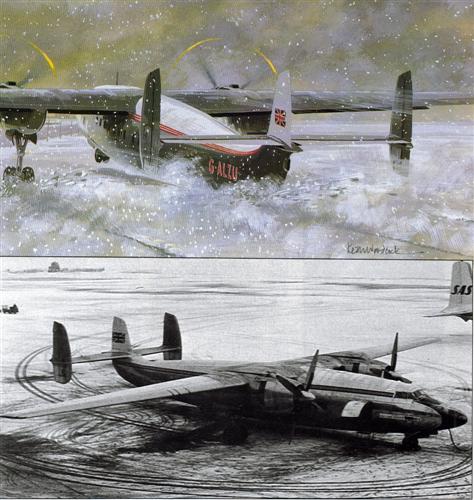
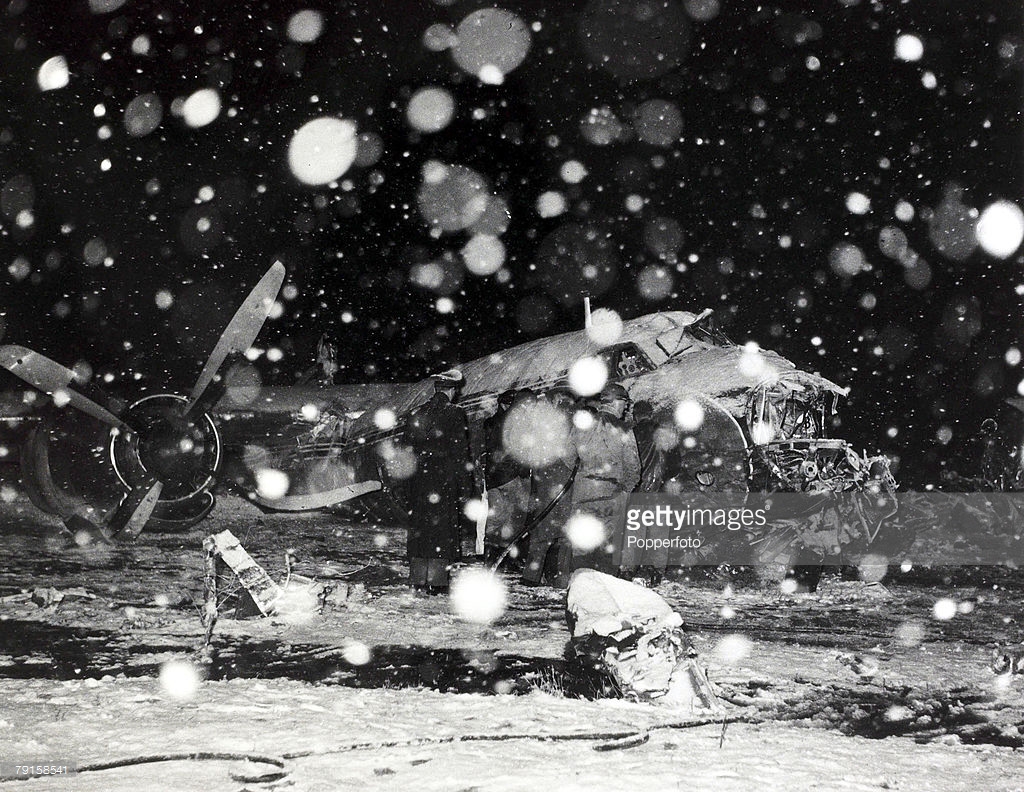
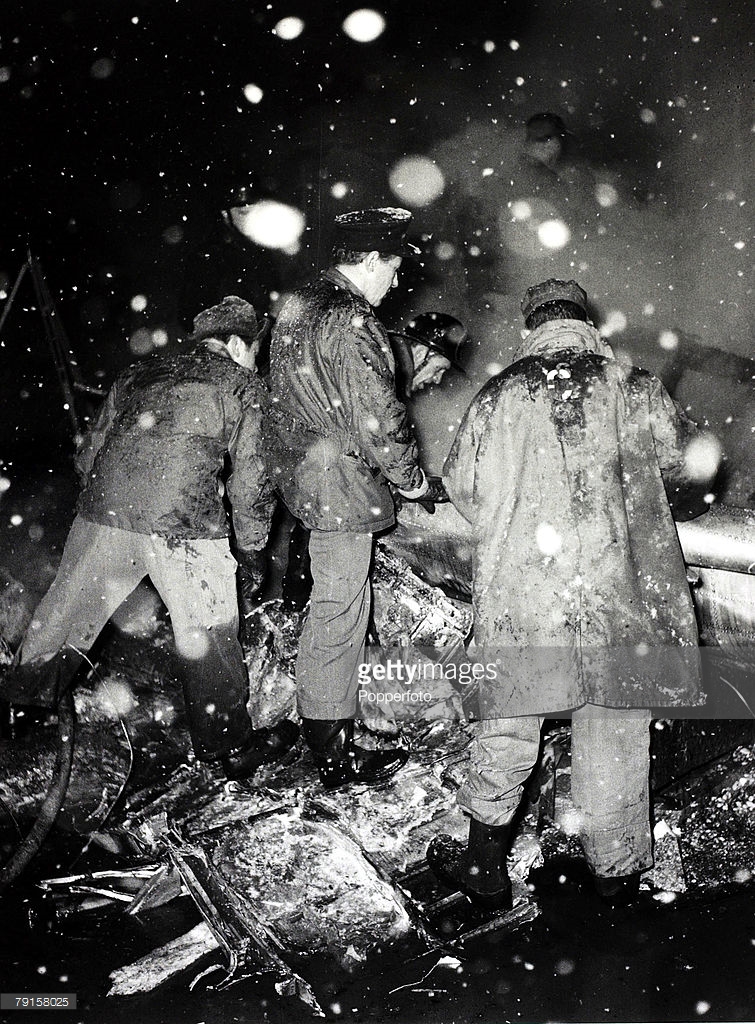
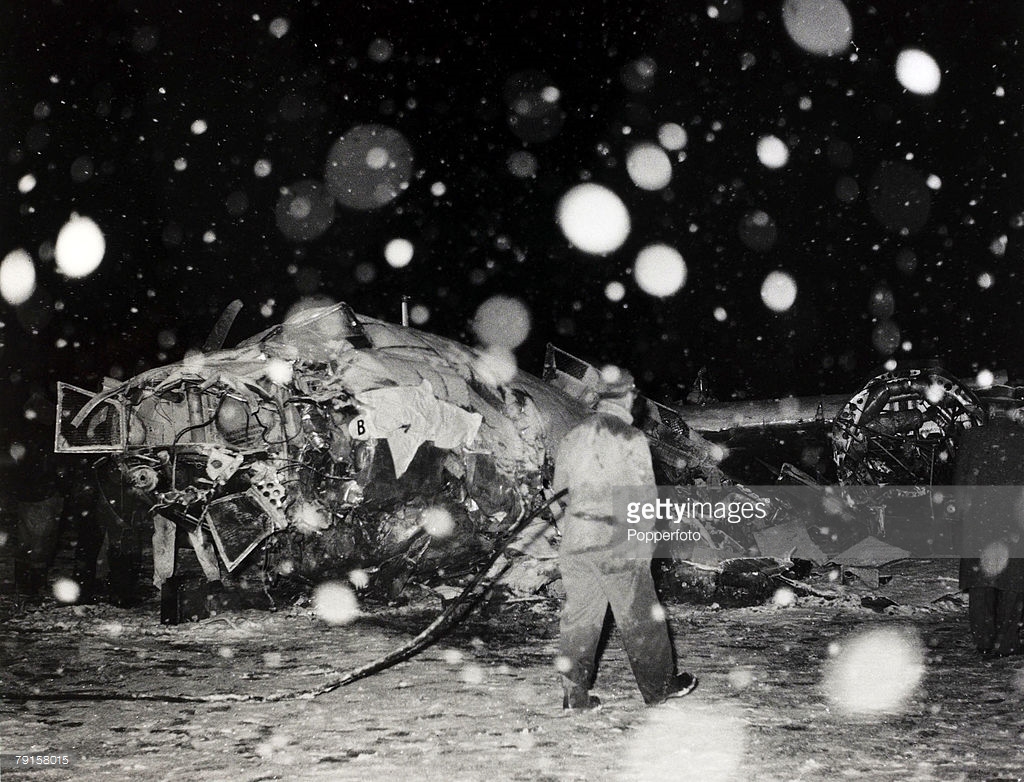
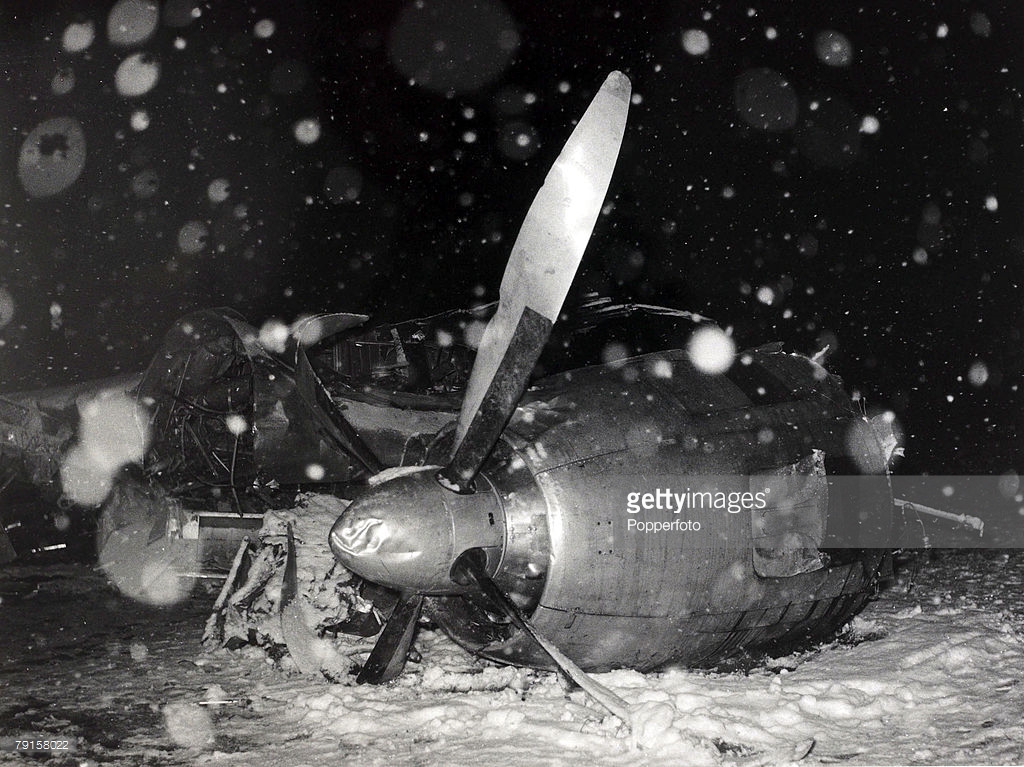
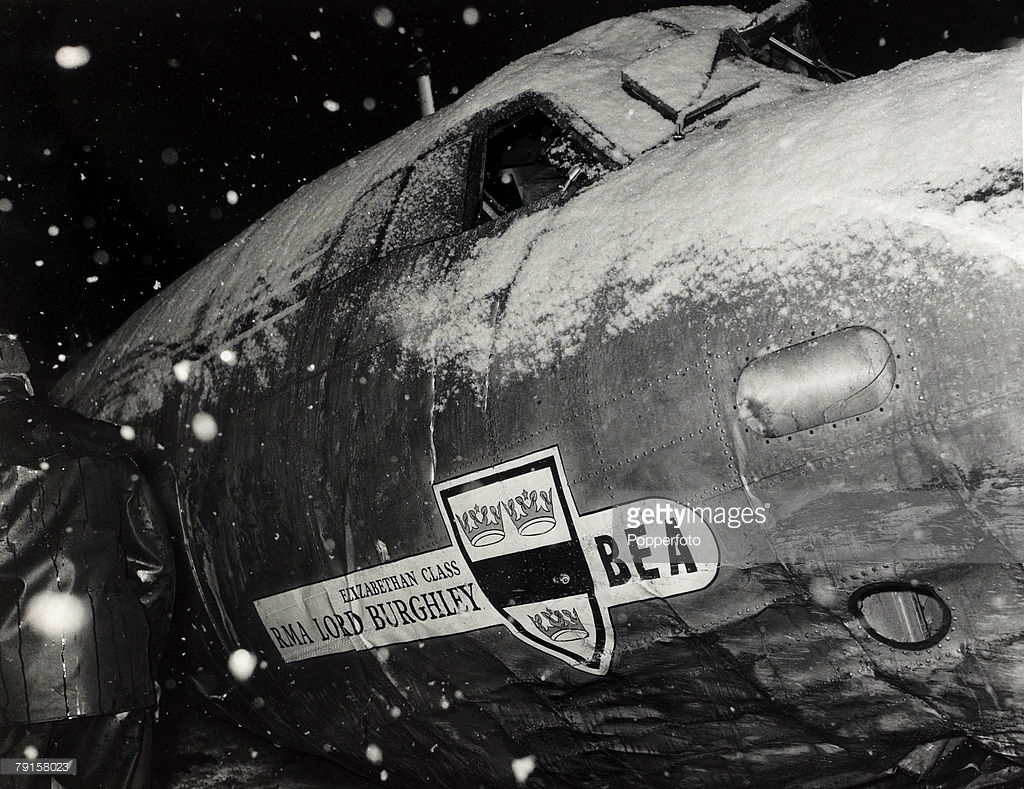
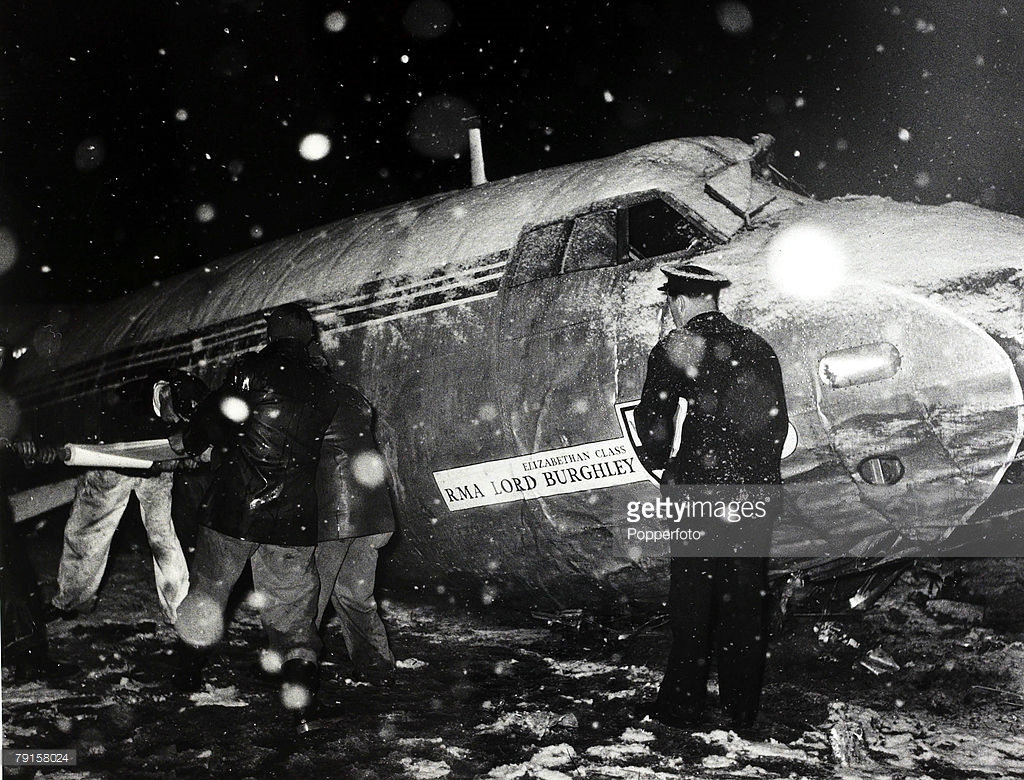
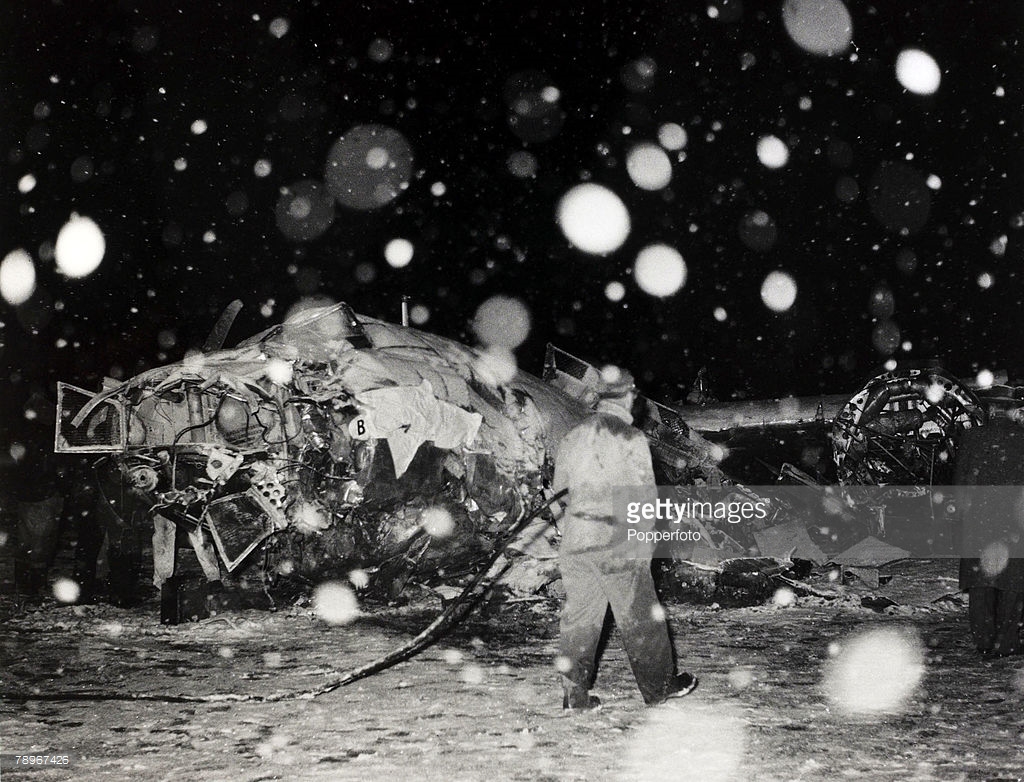
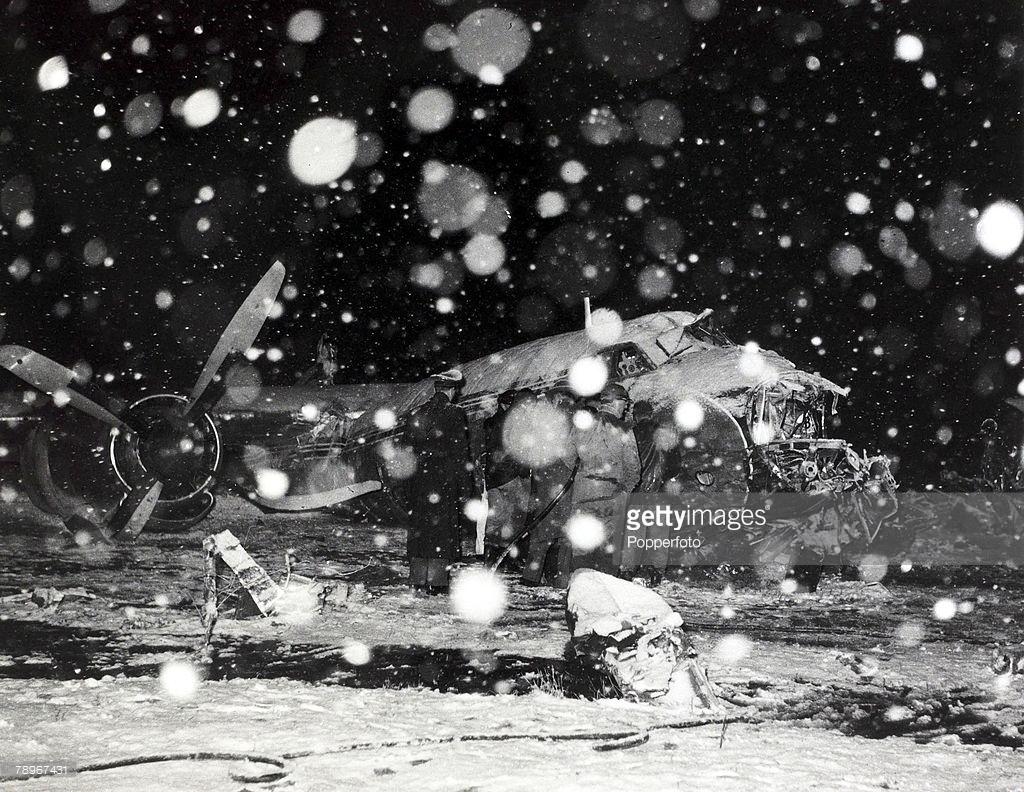
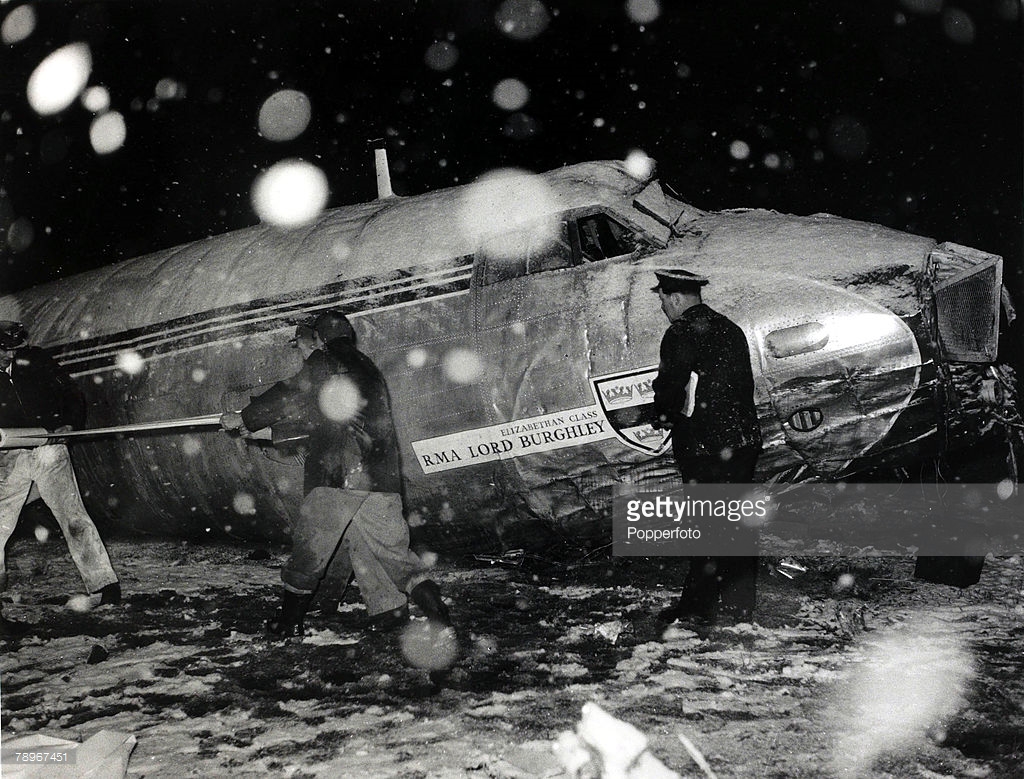
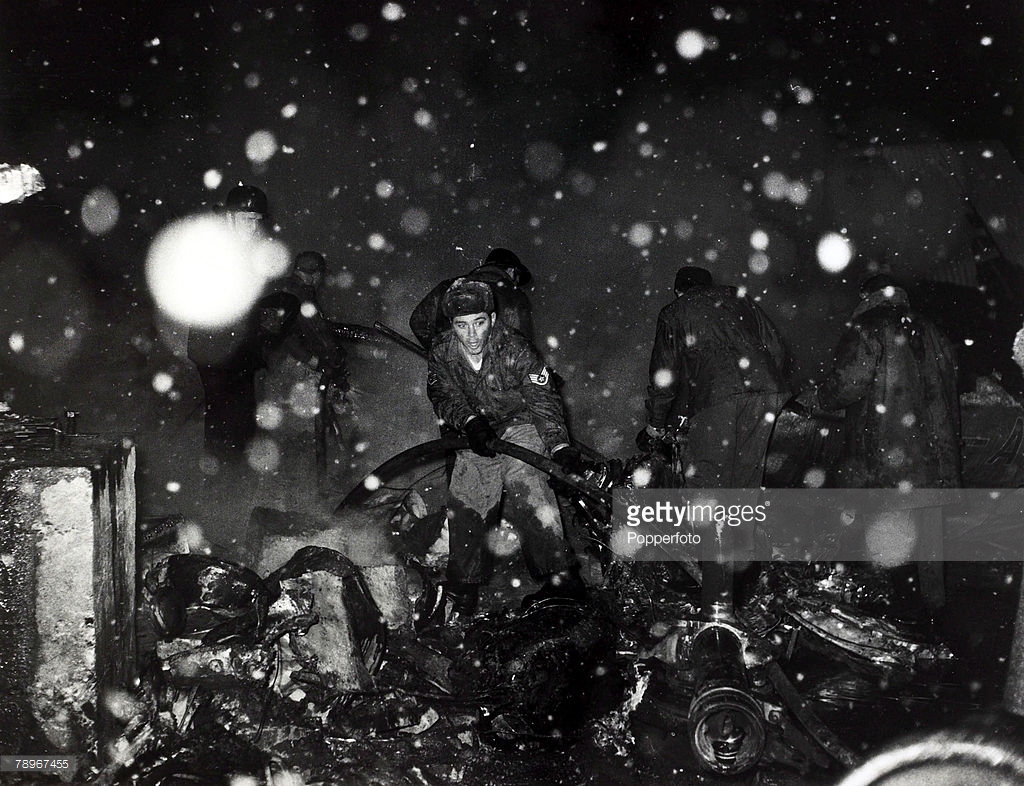
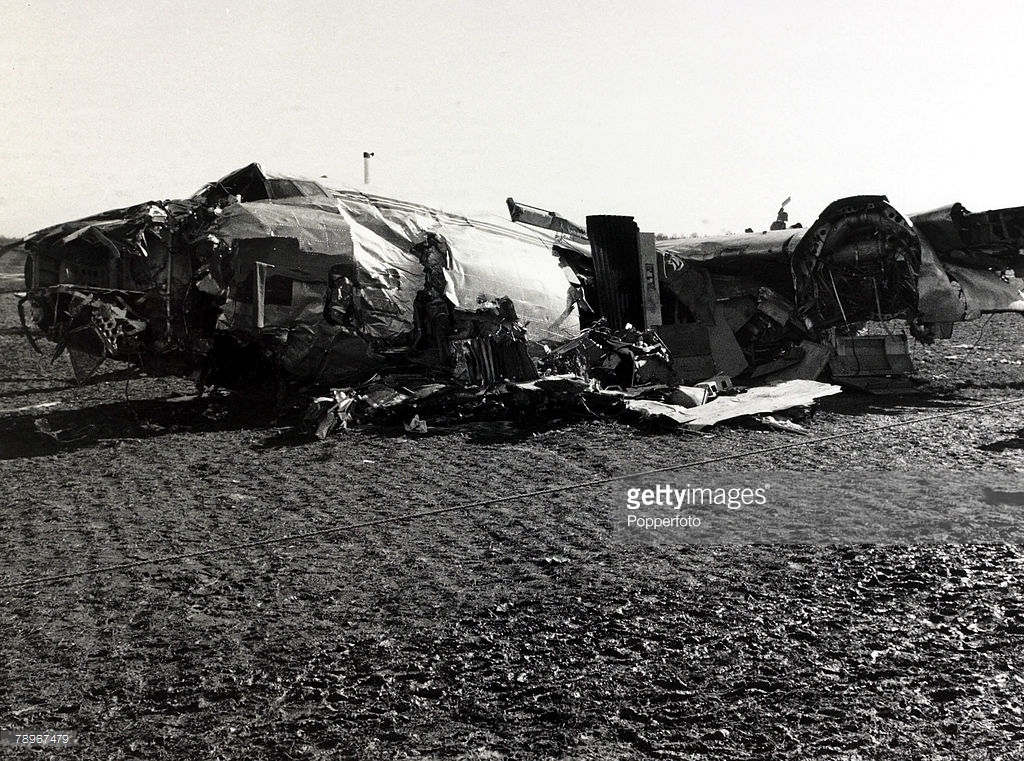
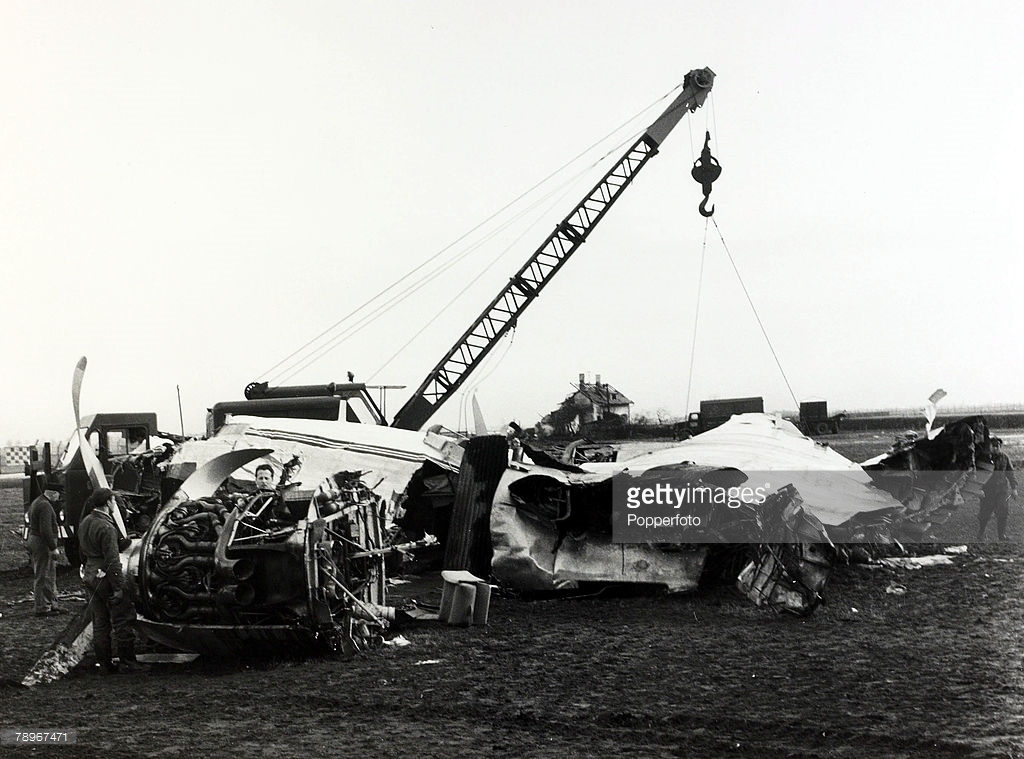
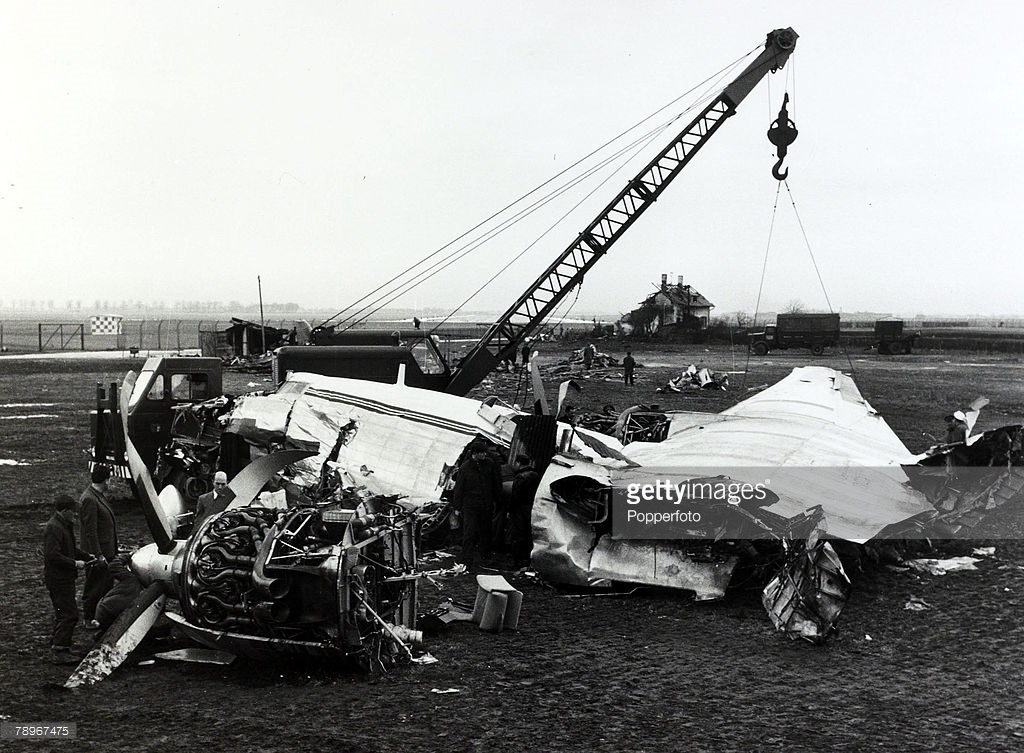
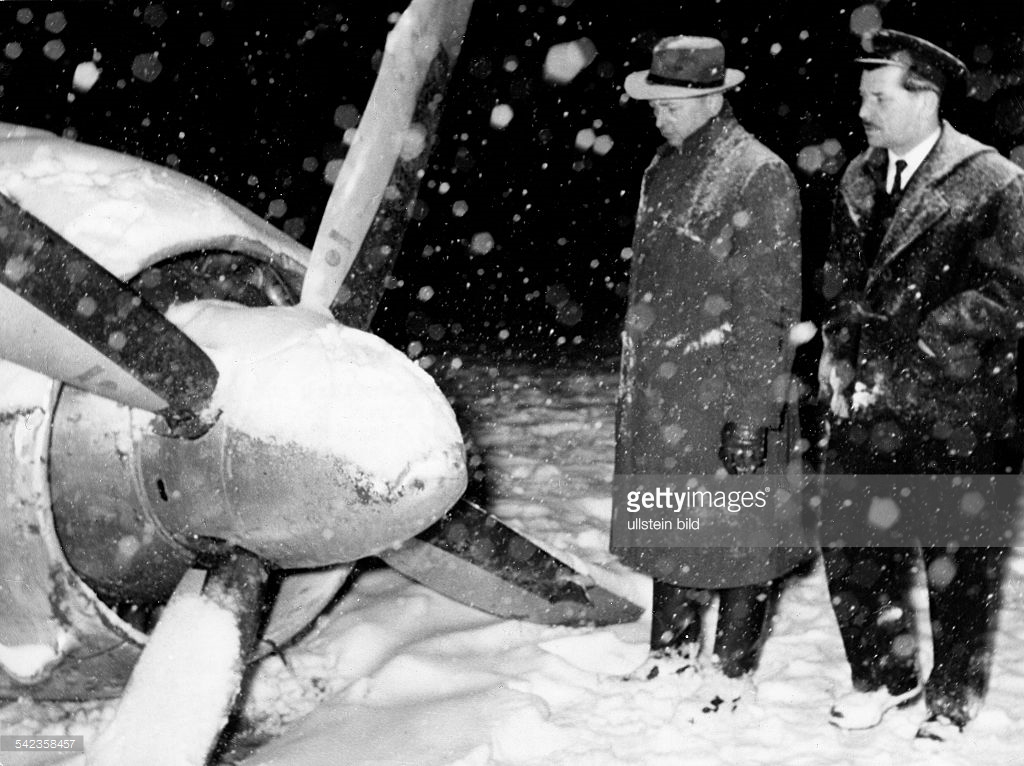
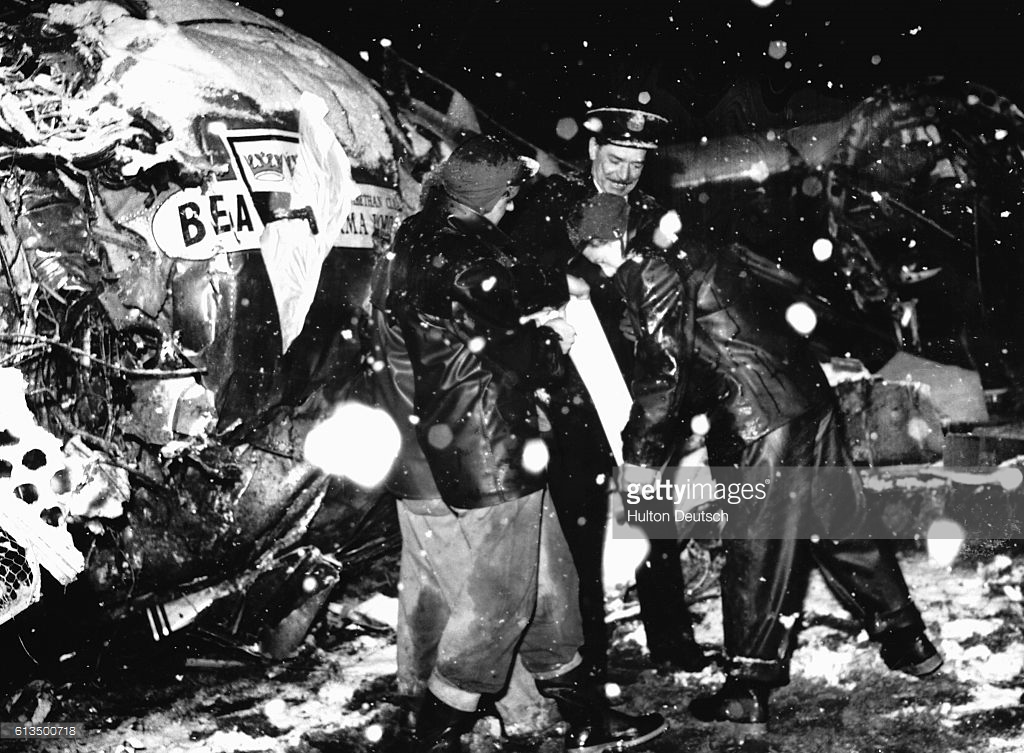
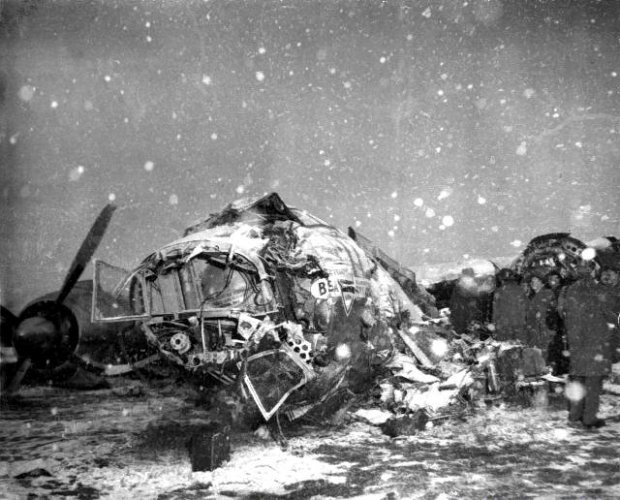
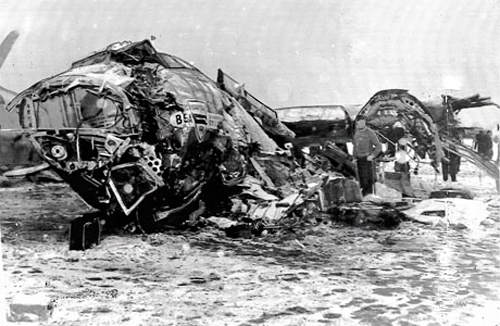
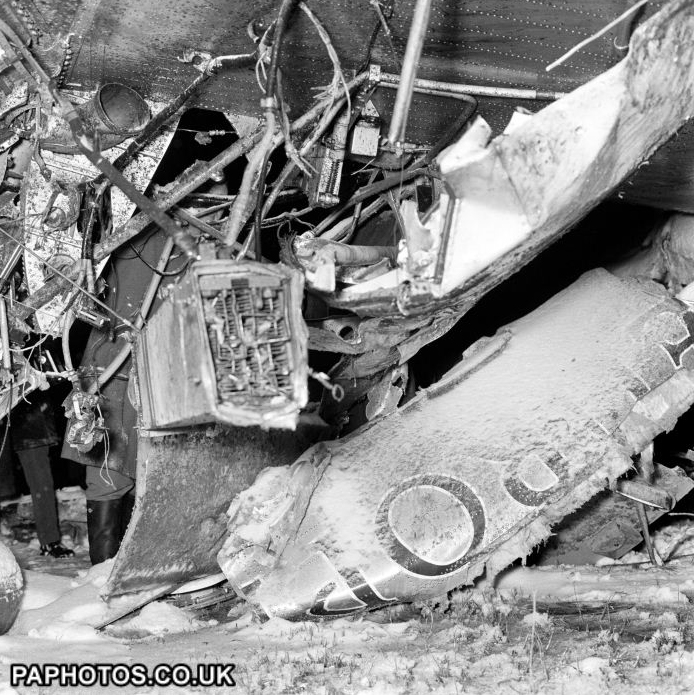
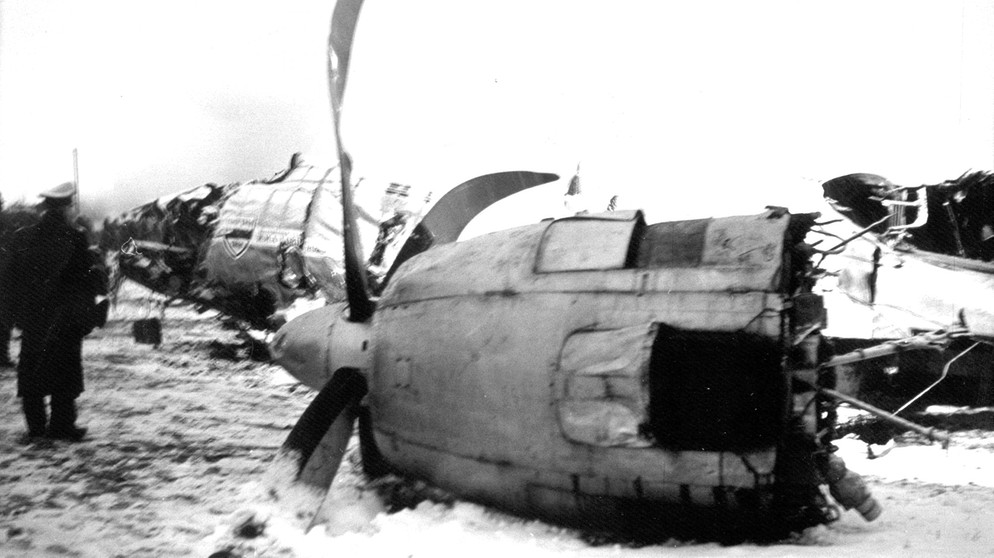
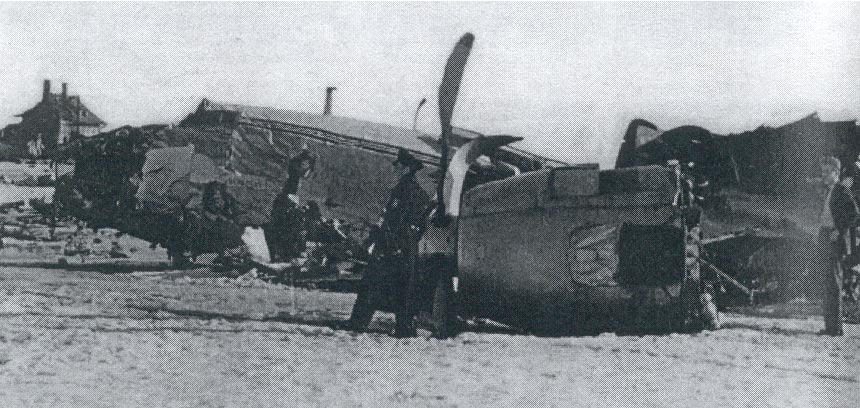
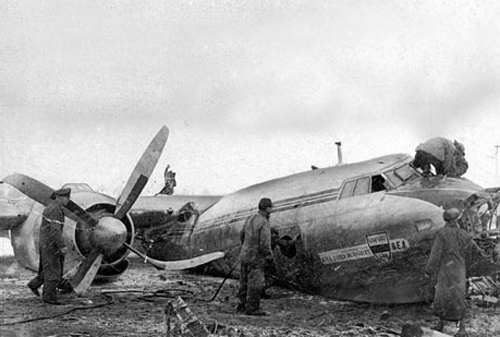
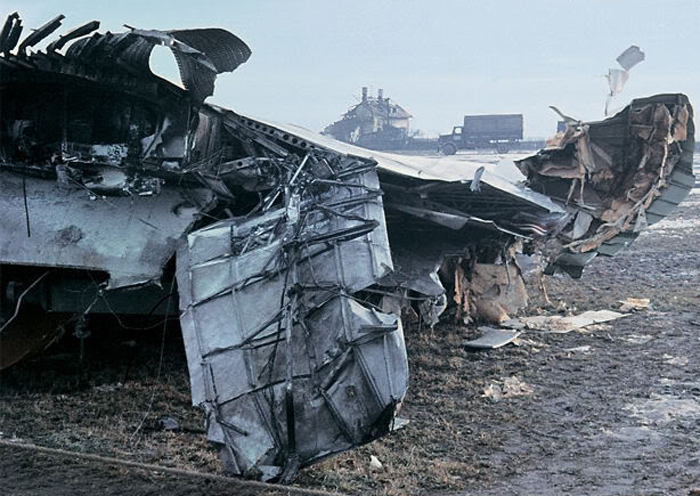
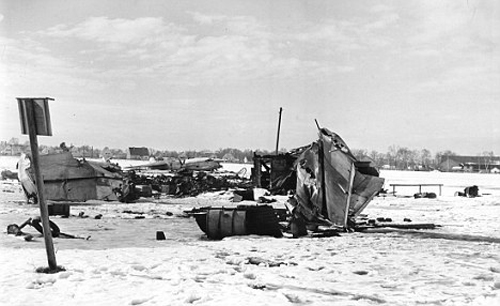
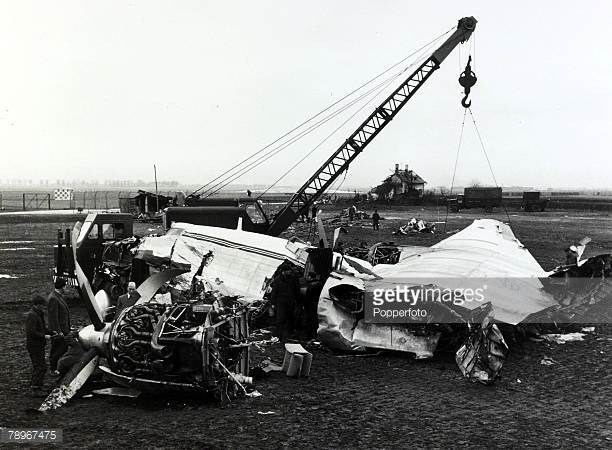
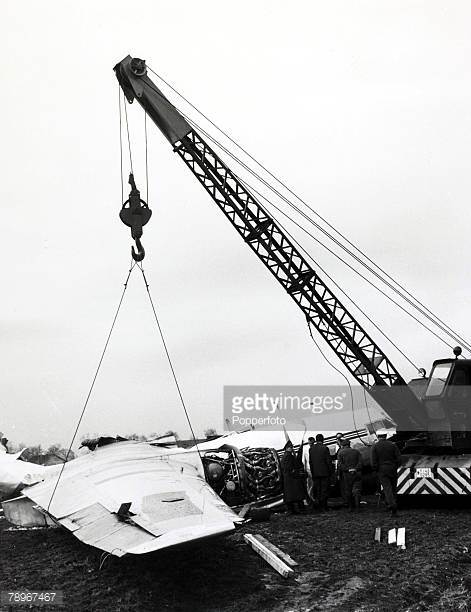
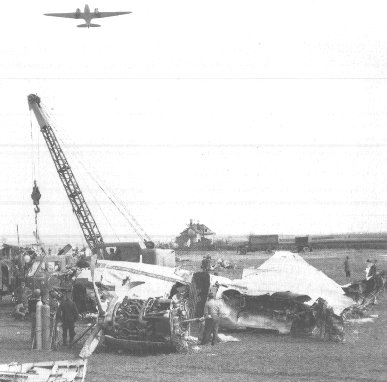
Crash of an Airspeed AS.57 Ambassador 2 in Düsseldorf
Date & Time:
Apr 8, 1955
Registration:
G-AMAB
Survivors:
Yes
Schedule:
Düsseldorf – London
MSN:
5224
YOM:
1951
Crew on board:
6
Crew fatalities:
Pax on board:
47
Pax fatalities:
Other fatalities:
Total fatalities:
0
Circumstances:
About six minutes after takeoff from Düsseldorf-Lohausen Airport, while in initial climb, the crew reported engine problems and received the permission to return. At this time, it appears that the left engine went into reverse. After completing a circuit, the pilot continued the approach at low height and in poor weather conditions when high tension wires forced him to gain height. He increased power on the right engine but the aircraft stalled and hit the ground with its left wing that was severely bent and partially sheared off. Upon impact, the left engine was sheared off and the airplane came to rest in a muddy field located few km from the airport. All 53 occupants were evacuated and only the crew was slightly injured. The aircraft was written off.
Probable cause:
It was determined that the accident was due to:
- the propeller of the left-hand engine going into brake position during climb. The technical reason for this occurrence so far has not been found,
- the weather which made the approach rather difficult. In good weather conditions the landing would probably have been successful.
- the propeller of the left-hand engine going into brake position during climb. The technical reason for this occurrence so far has not been found,
- the weather which made the approach rather difficult. In good weather conditions the landing would probably have been successful.




